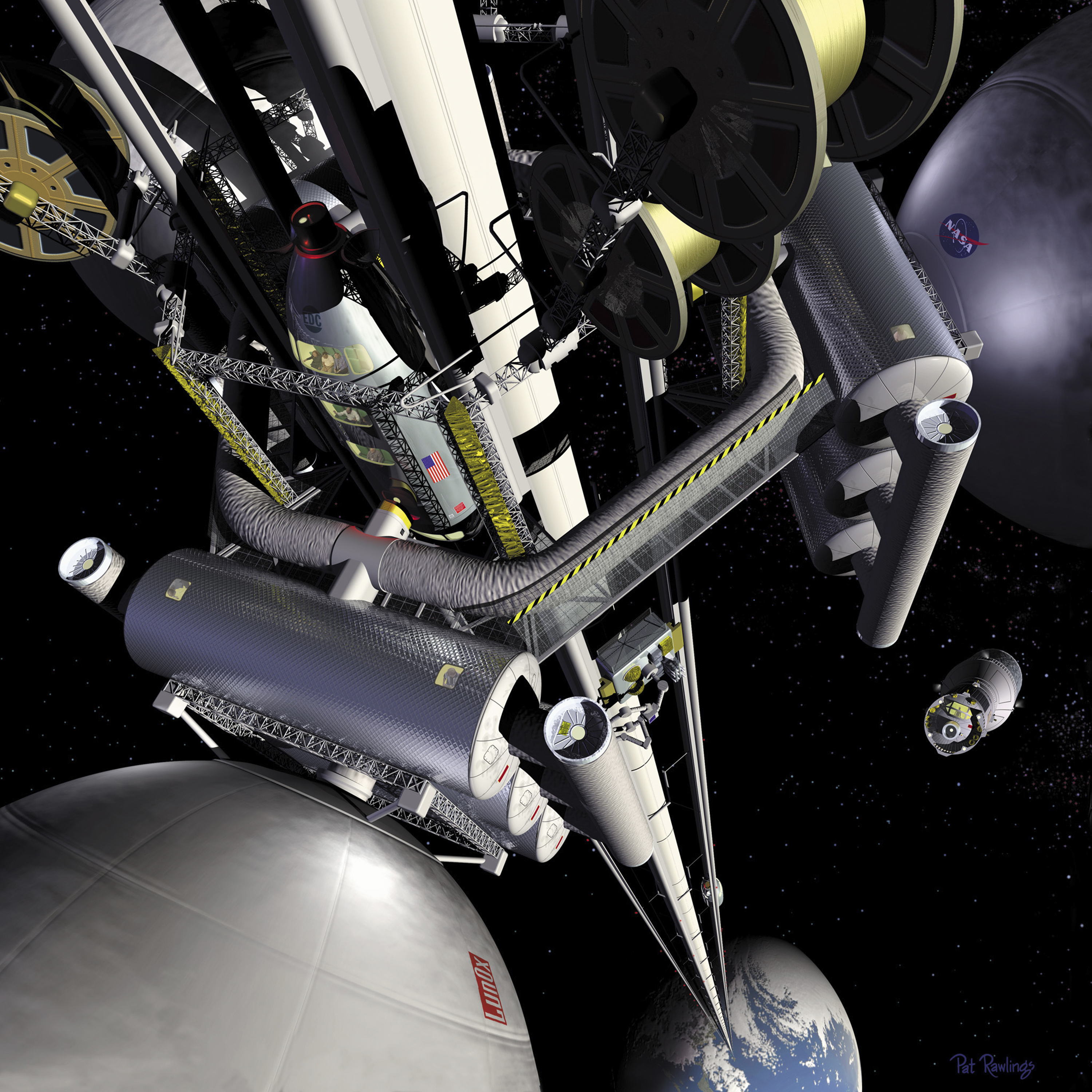2009-11-09
Space Elevator Contest Partially Won
The Space Elevator Games is a very interesting contest, essentially proving concepts that may one day lead to a fully operational space elevator. A Seattle company, LaserMotive, snagged $900,000 of the $2 million prize money available by climbing a 3,000 foot cable suspended from a helicopter. They completed the task 4 times with a best time of 3:48. The goal of the prize was to achieve a best time under 3 minutes, so the remaining $1.1 million is still up for grabs.LaserMotive's climber in action
The concept of a space elevator has been around since Arthur C Clarke first postulated the idea in his 1970's novels. A cable is tethered between the ground and a satellite in geostationary orbit, which is then traversed by a climber that can deliver and return payloads over the 22,000 mile distance. No small task, especially given the problem of getting power to the climber. The emerging technology of power beaming is used in the competition, where a laser is aimed at the climber to supply it with power.
So, isn't this a bit of a far out concept then?
Well, it is certainly ambitious! A space elevator is actually a very viable concept that would open up an entirely new method of access to space. It isn't without its problems though. One major hurdle is that a permanent cable stretching from the equator out to a geostationary satellite is a serious collision hazard, both for aircraft and for existing orbiting infrastructure. The ISS is in Low Earth Orbit and passes over the equator twice every 90 minutes. At some point it will inevitably cross the equator at the location of the elevator cable. An adjustment will have to be made to the ISS orbit to avoid a 17,500mph collision that will destroy both the ISS and the cable. This is of course possible with satellites that are able to adjust their orbits, but with those that cannot, the Hubble Space Telescope for example, it will be only a matter of time before a collision occurs. The problem of space junk becomes more pertinent too, as any one of the thousands of junk objects poses a threat to the cable.
NASA space elevator artists concept
Looking on the bright side however, if the concept were to become viable it would enable the construction of major orbital components at a fraction of the cost, removing entirely the need for expensive and hazardous rocket launches. Attach a small asteroid to the top of the cable as an anchor, and you have a solid location to build an off-world factory. Satellites could be constructed and then released, and a small tug-boat satellite could escort it to its desired orbit.
The technology is of course still not even in its infancy, with the Space Elevator Games producing concepts more than actual working technology, but it is certainly worthy of our attention. It may be a few centuries before we see a cable to the sky in action, so don't hold your breath just yet.
Happy Climbing Spacers!
SpaceHead
Images courtesy of NASA/Tom Tschida and NASA
Subscribe to:
Post Comments (Atom)






2 comments:
Is it something that can be safety tested horizontally before vertical climbs or am I completely wrong in the concept?
I believe the mechanical concepts can be tested horizontally, but finding somewhere to lay out a 22,000 mile cable might be be the difficult part!
Post a Comment